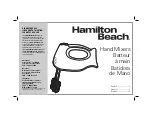
16
EMX512SC/EMX312SC/EMX212S
Making the Most of Your Mixer
BASIC
If so you might want to build the
mix around the vocals. This
means bringing the vocal channel
up to nominal first (if your level
setup procedure has been done
properly this will be a good
starting point), and then adding
the other instruments.
What you
add next will
depend on
the type of
material you
are working
with and
your
approach to it. If the vocals are
backed by a piano trio and the
song is a ballad, for example, you
might want to bring in the piano
next and get the vocal/piano
relationship just right, then bring
in the bass and drums to support
the overall sound.
Example2:
Funky R&B Groove
The approach will
be totally different
if you’re mixing a
funky R&B
number that
centers on the
groove. In this case most
engineers will start with the
drums, and then add the bass.
The relationship between the
drums and bass is extremely
important to achieve the “drive” or
groove the music rides on. Pay
particular attention to how the
bass works with the kick (bass
drum).
They should
almost sound
like a single
instrument—
with the kick
supplying the
punch and the bass supplying the
pitch. Once again, there are no
rules, but these are concepts that
have been proven to work well.
To EQ or Not to EQ
In general: less is better. There
are many situations in which you’ll
need to cut certain frequency
ranges, but use boost sparingly,
and with caution. Proper use of
EQ can eliminate interference
between instruments in a mix and
give the overall sound better
definition. Bad EQ—and most
commonly bad boost—just
sounds terrible.
Cut for a Cleaner Mix
For example: cymbals have a lot
of energy in the mid and low
frequency ranges that you don’t
really perceive as musical sound,
but which can interfere with the
clarity of other instruments in
these ranges. You can basically
turn the low EQ on cymbal
channels all the way down without
changing the way they sound in
the mix. You’ll hear the difference,
however, in the way the mix
sounds more “spacious,” and
instruments in the lower ranges
will have better definition.
Surprisingly enough, piano also
20 50 100
200
500
1 k 2 k
5 k
10 k
20 k (Hz)
Piano
Bass Drum
Snare Drum
Bass
Guitar
Trombone
Trumpet
Cymba
l
Fundamental: The frequency that determines the basic musical pitch.
The fundamental
and harmonic
frequency ranges of some
musical instruments.
Some Frequency Facts
The lowest and highest frequencies than can be heard by the
human ear are generally considered to be around 20 Hz and
20,000 Hz, respectively. Average conversation occurs in the
range from about 300 Hz to about 3,000 Hz. The frequency of a
standard pitchfork used to tune guitars and other instruments is
440 Hz (this corresponds to the “A3” key on a piano tuned to
concert pitch). Double this frequency to 880 Hz and you have a
pitch one octave higher (i.e. “A4” on the piano keyboard). In the
same way you can halve the frequency to 220 Hz to produce
“A2” an octave lower.
The frequencies controlled by the LOW, MID, and HIGH bands
on this mixer have been specifically selected to provide the most
“musical” range of adjustment with the widest possible range of
instruments (100Hz, 2,500 Hz, and 10,000 Hz, respectively).
Harmonics:
Multiples of the fundamental frequency that play a role in
determining the timbre of the instrument.
















































